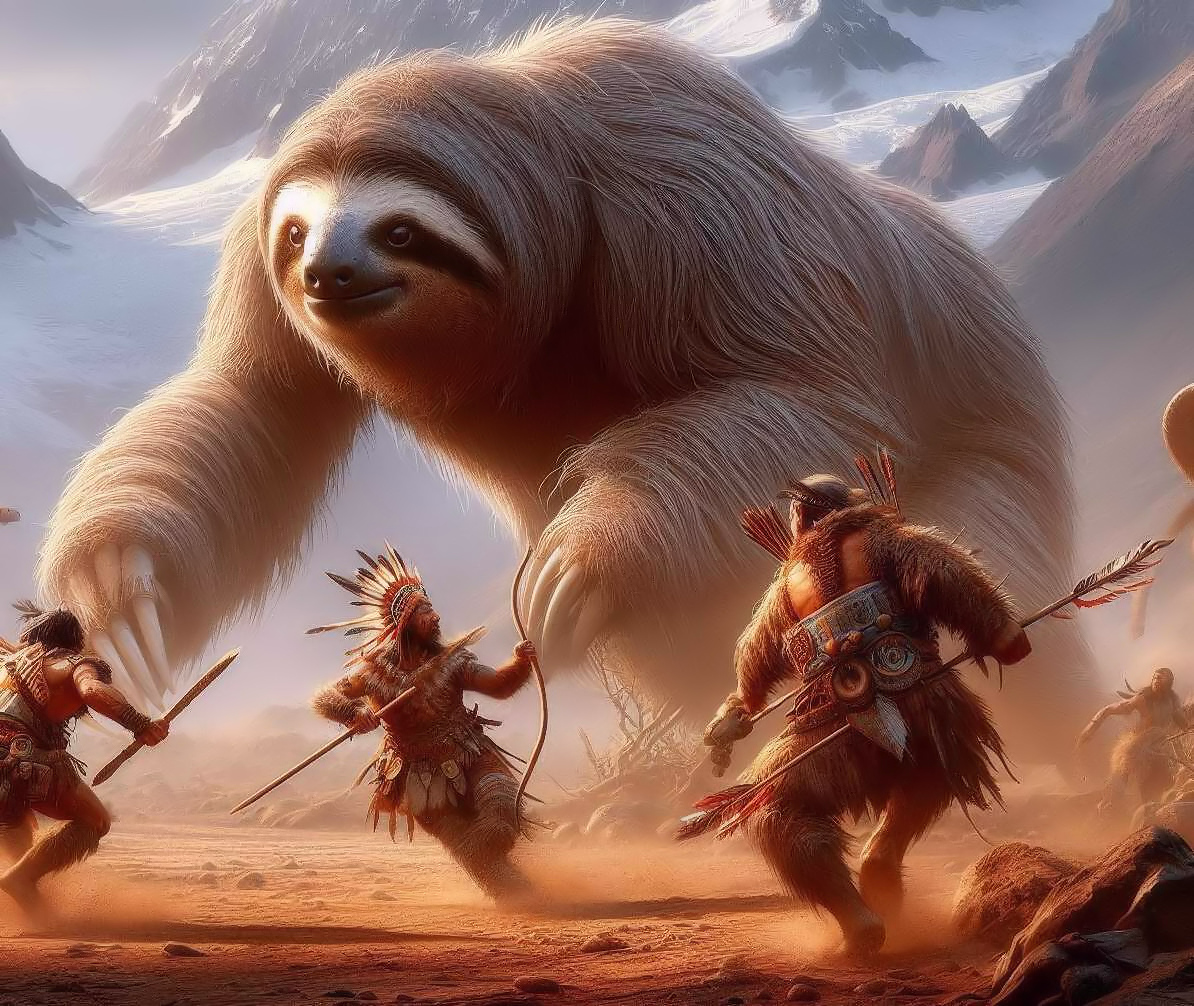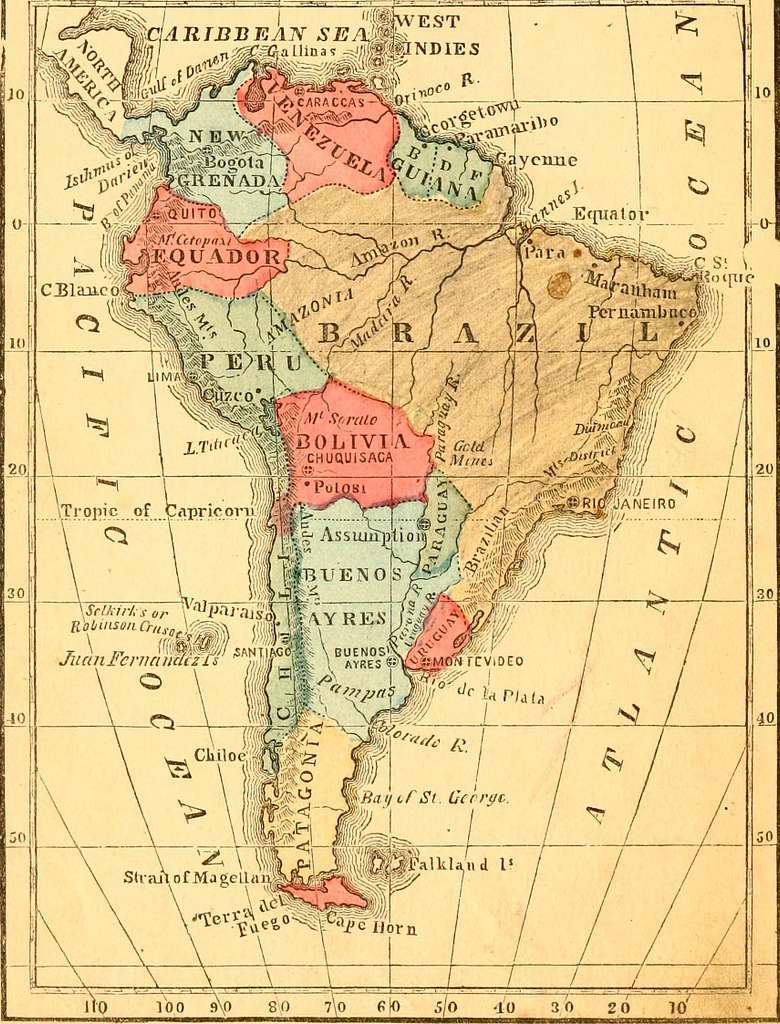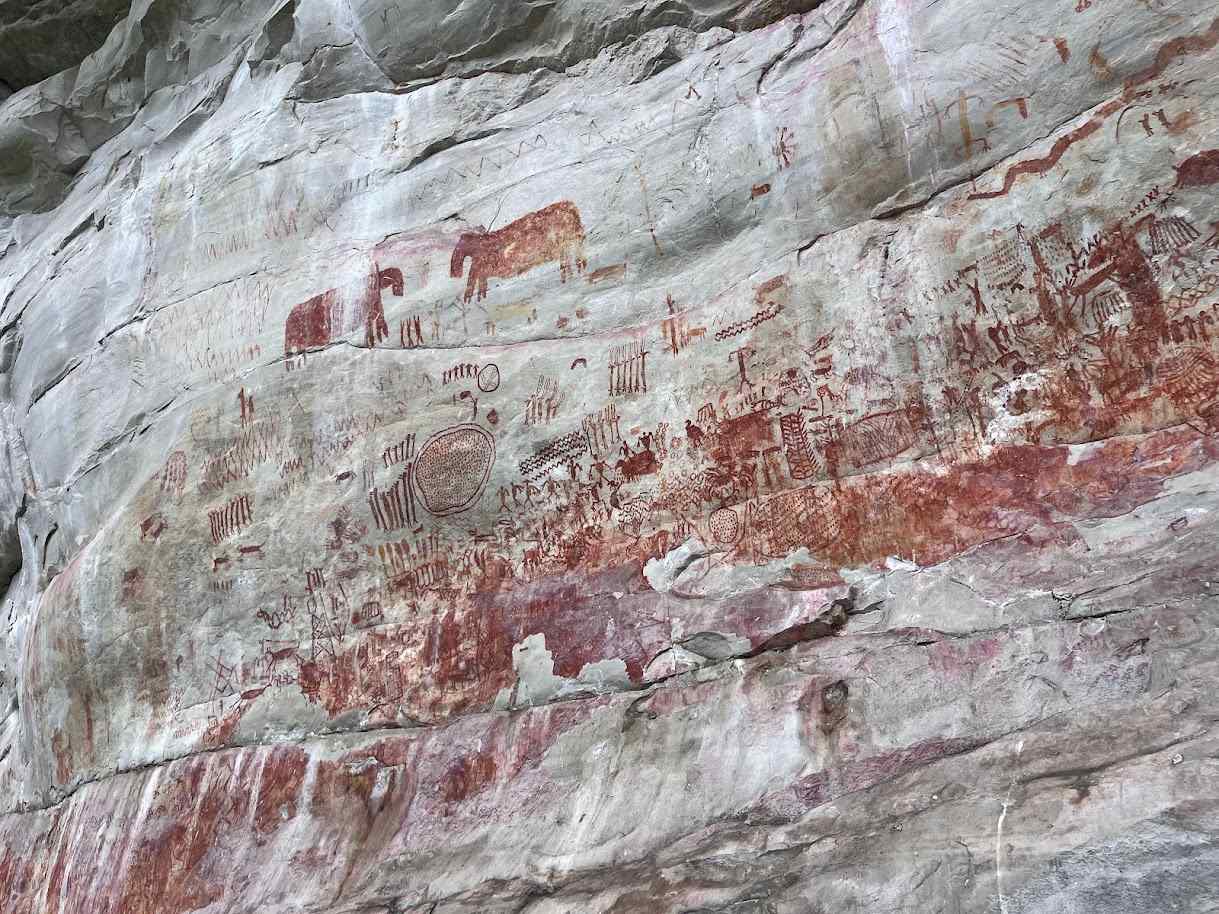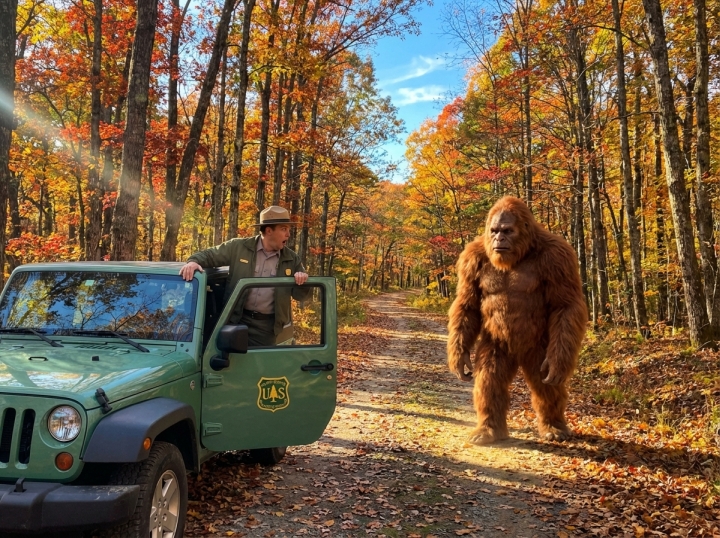
Thousands and thousands of years ago in the Americans, there were two fur covered creatures that would stand on two legs and measured well over ten feet tall. The native American Indians fought these enormous animals, frequently killed them, and then ate for food the vast majority of their bodies. The fur was used to make warm clothing in cold weather. Claws and sharp teeth were used often as ornamental jewelry. Scientists claim these very large beasts died out many centuries ago. But, did they really? Perhaps a very, very small number are still around in great seclusion in the extremely vast and open wilderness territories.
What were these hairy behemoths? They were the giant ground sloths and the giant short faced bear. Both of these beasts walked on four legs, but would stand on two legs and would swing their clawed front legs at attackers. These beasts also had a considerably limited amount of bi-pedal movement. The giant ground sloths did not have teeth that were as sharp as those of the giant short faced bears. The huge ground sloths and the colossal short-faced bears, who would be considerably larger than even polar bears or grizzly bears, left tremendous sized foot prints in the grasses, soils, and sands. The very huge ground sloth would have a fairly long tail, while the bears in that very ancient time, like in modern times, had very short tails. Millions of years ago, bears had very long tails. The very tall top soil sloths were herbivores that ate fruits, vegetables, and possibly small animals. The ancient bears, like today’s modern bears, were omnivores who mainly ate fruits and vegetables but other times other animals, large or small, and even at times human beings.

In the base of South America spanning the lower sections of Argentina and Chile, there is a remote; sparely populated region called Patagonia which is shared by the two forenamed countries. Patagonia is famous for its landscapes, vast forests, national reserves, national parks, glaciers, and native wildlife. Native American Indian tribes of Patagonia told stories in ancient times about their battles with a certain species of giant hairy beasts which modern science believes to be giant ground sloths. The tales describe the animals as extremely powerful and ferocious when using their sharp claws of their front feet as weapons as they stood upright to defend themselves, and their bodies were so though that long sharp spears would not stop them.
Located in the Amazon rainforest of Colombia, in a place called Serranía La Lindosa, are rock cliffs covered with thousands of colorful drawings that span 12 kilometers (8 miles). This area, which is largely inaccessible, is believed by many scientists to date back to prehistoric times. These rock paintings, created with red ochre apparently show early humans hunting and interacting with plants and animals. Animals include, but are not limited to dogs, horses, cattle, birds, turtles, and one image that strongly appears to show a giant ground sloth and a miniature version of the same animal with apparently its babies.
The human figures are shown dancing, wearing masks, and engaging in various activities, providing a vivid glimpse into the lives of the prehistoric communities that lived there.
These paintings were discovered by a British-Colombian research team in 2017, but the findings were kept secret for some time to allow for further study and documentation. The area had been largely inaccessible due to Colombia’s long civil conflict, making this discovery even more remarkable.
The paintings not only offer insights into the fauna and flora of the time but also into the cultural and social practices of early human settlers in the western Amazon. Researchers believe that the people who created these artworks were among the first humans to inhabit this region.
These extremely old paintings at Serrania La Lindosa were made with mineral colors which are not suitable for carbon 14 dating to reveal a time frame off the rock art. There has been at least one skeptical researcher who thinks the rock paintings might only a few centuries, but has no solid proof. The modern day descendants of the Native American Indian tribes that lived in that region for thousands of years can greatly help in telling what they know about how very old the rock paintings are. Generally speaking, the Native American Indians know a very great deal of their own history going back for many millenniums.

An interesting fact about the colossal ground sloth is that it dug long tunnels to search for underground water. At other times, the creature would create a tunnel and live at the bottom as its burrow. In Brazil, a giant ground sloth dug a tunnel at least ten thousand years ago. This particular vertical shaft, located right under a farmer’s house, measures nearly 2 meters high (a little over 6 and one half feet), almost 2 meters wide, and about 15 meters long (almost 50 feet). Deep claw marks are embedded in the walls of the underground structure. Scientists believe giant ground sloths used their powerful forelimbs to grab rocks and soil and their strong hind legs to push the debris out of the way, allowing them to dig these subterranean passages. In 2015, researchers discovered a 100-meter-long tunnel, also dug by giant ground sloths, in the northern state of Rondonia—marking the first such find in the Amazon rainforest.
In Brazil, giant armadillos, which were the size of cars, also excavated tunnels through rocks. These burrows show deep claw marks as well. So far, scientists have only found such large tunnels in South America, not in North America, where these creatures also lived. However, as time goes on, ancient tunnels dug by these large animals may be uncovered in North America. The giant topsoil sloths and giant armadillos also lived in caves. In Belize (formerly British Honduras), scuba divers discovered the fossilized remains of a behemoth ground sloth, at least 27,000 years old, in early winter of 2019. The animal got stuck in a natural sinkhole above a large underground pool while searching for water and later died there.
The fascinating study of ancient life in the Americas continues as researchers uncover more fossils and artifacts.


